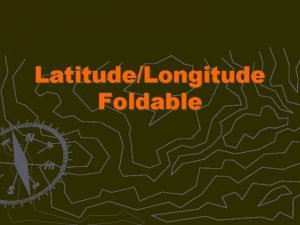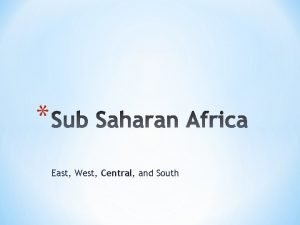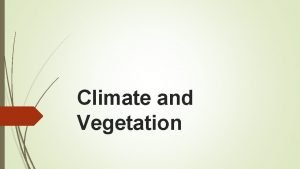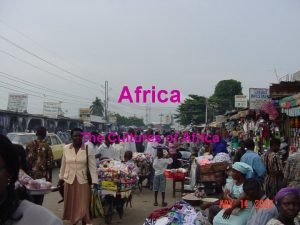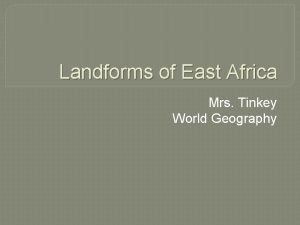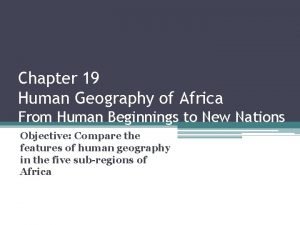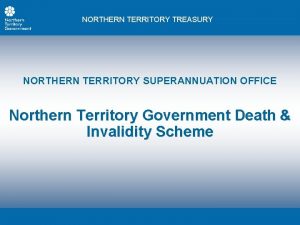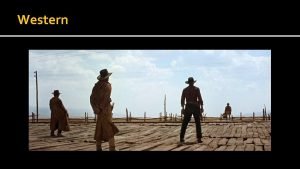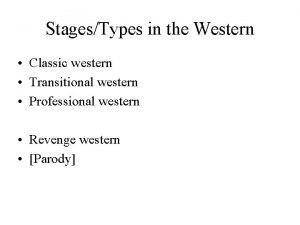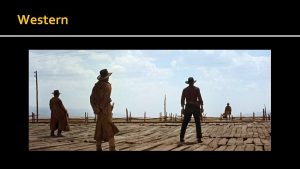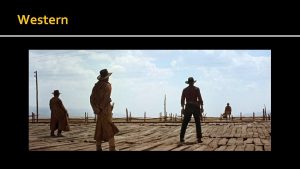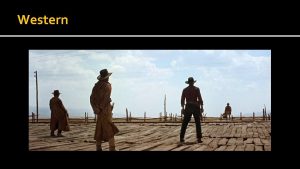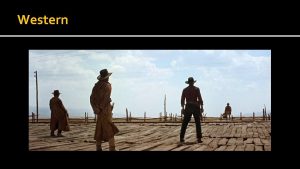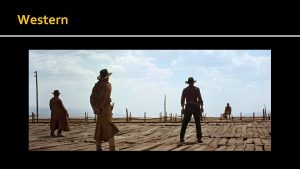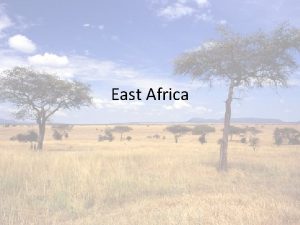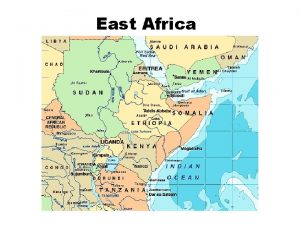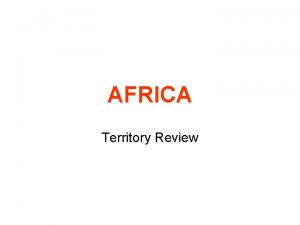AFRICA NORTHERN AFRICA WESTERN AFRICA EAST AFRICA CENTRAL
















- Slides: 16

AFRICA

NORTHERN AFRICA WESTERN AFRICA EAST AFRICA CENTRAL AFRICA SOUTHERN AFRICA

NORTH AFRICA: PHYSICAL FEATURES 1. The Nile River is the 3. The Sinai Peninsula is a world’s longest river triangular piece of land flowing upward about that connects Africa to the 4, 000 miles; empties into continent of Asia. the Mediterranean Sea 4. Between the Sinai and rest 2. For centuries rain to the of Egypt is the Suez Canal: south caused floods in the a narrow waterway that north leaving rich silt connects the (finely ground fertile soil Mediterranean Sea with that is good for growing the Red Sea. crops)

NORTH AFRICA: PHYSICAL FEATURES 5. The Sahara is the largest desert in the world. 6. Very few people live there, but small settlements are located near a water source such as an oasis; a wet fertile area where a natural spring or well provides water. 7. The Sahara desert is not flat. Some sand dunes and ridges are as high as 1, 000 feet and the Atlas Mountains rise as high as 13, 600 feet!

NORTH AFRICA: CLIMATE, RESOURCES, AND CULTURE 1. Three Main Climates: • Desert: Very dry covers most of the region. Very hot during the day ( up to 136° F) and drop quickly after sunset. • Mediterranean: northern coast consists of moist, mild winters and hot, dry summers. • Steppe: Areas between coast and Sahara 2. Oil is an important resources. 3. The majority of North Africans are Muslim During the holy month of Ramadan, Muslims abstain from food and drink during the day. 4. Many North Africans speak Arabic

WEST AFRICA: PHYSICAL FEATURES 1. Coastal plain is home to most of the region’s cities. Interior plains provide land where people grow crops. 2. Tibesti Mountains to the northeast 3. The Niger River flows 2, 600 miles, empties into the Gulf of Guinea 4. Many people farm along its banks or fish 5. Important transportation route especially during rainy season

WEST AFRICA: CLIMATE AND RESOURCES 1. Four different climate regions: “zonal”, meaning organized by zone • Sahara- hardly any vegetation, dry climate, few or no people • Sahel- strip of land dividing desert from wetter areas, steppe climate. Desertification- spread of desert-like conditions • Savanna- Tall grasses, scattered trees and shrubs • Humid tropical- lies along coasts of Atlantic and Gulf of Guinea 2. Variety of resources including agricultural products, oil, and minerals (diamonds, gold, iron ore, bauxite- main source of aluminum) 3. Ghana leading producer of cacao (used to make chocolate) 4. West Africa’s main exports include coffee, coconuts, and peanuts

WEST AFRICA: HISTORY 1. One of the earliest kingdoms was Ghana. Controlled the Sahara trade in gold and salt became rich and powerful in 800. 2. Empire of Mali replaced Ghana in about 1300 gaining control of the trade routes • Mansa Musa was Mali’s most famous king • Invasions caused the decline of Mali in the 1500 s 3. Replaced by kingdom of Songhai • Timbuktu was the cultural center with a university, mosques, and over 100 schools 4. Declined around 1600 when Europeans began trading along coast

WEST AFRICA: HISTORY AND CULTURE The Slave Trade: 5. For a while European and Africans traded with each other however demand for labor in American colonies changed that. 6. European traders met demand by selling enslaved Africans to the colonists 7. Devastated West Africa: families were split apart, many died on the voyage. By the end of the slave trade in 1800 s millions had been enslaved. 8. After end of slave trade France, Britain, Germany, and Portugal claimed colonies to access resources. Most of these did not become independent until after WWII 9. Western African societies are very diverse all influenced by traditional African cultures, European culture and Islam. 10. The two most common religions are Christianity and Islam. Some people also practice Animism which is the belief that bodies of water, animals, trees and other natural objects have spirits.

EAST AFRICA: PHYSICAL FEATURES, CLIMATE AND VEGETATION 1. Rift Valleys: Places on Earth’s surface where the crust stretches until it breaks. Great Rift Valley is the largest rift on the Earth 2. Mount Kilimanjaro is the highest mountain in Africa rising 19, 340 feet! 3. Home to one of the largest plains called the Serengeti Plain. Wildlife includes elephants, giraffes, lions, and zebras. 4. Lake Victoria- Africa’s largest lake 5. East Africa north of the equator has cool, highland climate. Most of the population lives in highland region. 6. Areas near equator receive greatest amount of rainfall 7. Areas farther from equator are much drier and droughts are common causing crops and grasses for cattle die, people begin to starve

EAST AFRICA: CULTURE 1. Christianity and Islam influenced the lives of many East Africans. Other influences included trade, the arrival of Europeans, ethnic conflict, and independence 2. Christianity was first introduced as early as 300 AD 3. By about 700 AD Islam spread from Egypt to Northern Sudan and spread to the Indian Ocean coast to what is now Somalia 4. Many city-states became major Islamic centers controlling trade on the coast

CENTRAL AFRICA: PHYSICAL FEATURES AND CLIMATE 1. Congo Basin- generally flat region surrounded by higher land such as mountains and plateaus 2. Congo River is fed by hundreds of smaller rivers. Provides important transportation route to the interior of the region 3. Victoria Falls is located on the Zambezi River 4. Lies along the equator. Congo Basin has a humid tropical climate. 5. Large, dense tropical forest 6. Gorillas, elephants, wild boars, okapis 7. Forests are in danger: rapidly being cleared for farming and logging.

CENTRAL AFRICA: RESOURCES 1. Most people are subsistence farmers ( grow coffee, bananas, and corn) 2. People trade products in periodical markets, open air trading markets set up once or twice a week 3. Copper is the most important resource in this region. 4. Poor transportation systems and political problems have kept regions resources from being fully developed.

CENTRAL AFRICA: CULTURE 1. The people of Central Africa speak hundreds of different languages. The main reason is the variety of ethnic groups in the region. 2. Ethnic: People who share a common cultural background including ancestry and language 3. Many official languages of countries in this region are European from their colonial pasts. 4. Central Africa is famous for sculpture, carved wooden masks, and beautiful cotton gowns dyed bright colors.

SOUTHERN AFRICA: PHYSICAL GEOGRAPHY & CLIMATE 1. Most of the land lies on a large plateau. The steep face at the edge of the plateau is called an escarpment. 2. Many rivers flow in this regions providing irrigation for farmland. Also home to animals such as crocodiles, zebra, hippos. 3. Climate varies from east to west. The east coast is wet, whereas the west is very dry.

SOUTHERN AFRICA: CULTURE 1. South Africa’s culture reflects both European and African influences. 2. This region was once controlled by a policy known as apartheid, which divided the people by race. Many South African nations did not achieve independence from apartheid until 1990. 3. The people of South Africa belong to hundreds of different ethnic groups. (Example: 9 million people in country of South Africa are Zulu) 4. Most of the African languages are related to Khoisan or Bantu language families. Khoisan speakers are known for the “click” sounds they make when they speak 5. Christianity and traditional African religions are the most common religions.
 Eastern and western hemisphere
Eastern and western hemisphere Horizontal movement of air is called
Horizontal movement of air is called Near east vs middle east
Near east vs middle east East is east and west is west
East is east and west is west Traditional expressions of love separation and loneliness
Traditional expressions of love separation and loneliness Chesterise
Chesterise East central indiana
East central indiana Central east community care access centre
Central east community care access centre East central consortium
East central consortium Central east bcu
Central east bcu Which ocean borders africa on the east
Which ocean borders africa on the east Equatorial climate characteristics
Equatorial climate characteristics Lesson 1 latin america africa and the middle east
Lesson 1 latin america africa and the middle east East africa has great cultural diversity because of its -
East africa has great cultural diversity because of its - Gtr east africa
Gtr east africa East africa landforms
East africa landforms Chapter 19 section 1 east africa
Chapter 19 section 1 east africa
